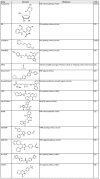Making cardiomyocytes with your chemistry set: Small molecule-induced cardiogenesis in somatic cells
- PMID: 25810812
- PMCID: PMC4365307
- DOI: 10.4330/wjc.v7.i3.125
Making cardiomyocytes with your chemistry set: Small molecule-induced cardiogenesis in somatic cells
Abstract
Cell transplantation is an attractive potential therapy for heart diseases. For example, myocardial infarction (MI) is a leading cause of mortality in many countries. Numerous medical interventions have been developed to stabilize patients with MI and, although this has increased survival rates, there is currently no clinically approved method to reverse the loss of cardiac muscle cells (cardiomyocytes) that accompanies this disease. Cell transplantation has been proposed as a method to replace cardiomyocytes, but a safe and reliable source of cardiogenic cells is required. An ideal source would be the patients' own somatic tissue cells, which could be converted into cardiogenic cells and transplanted into the site of MI. However, these are difficult to produce in large quantities and standardized protocols to produce cardiac cells would be advantageous for the research community. To achieve these research goals, small molecules represent attractive tools to control cell behavior. In this editorial, we introduce the use of small molecules in stem cell research and summarize their application to the induction of cardiogenesis in non-cardiac cells. Exciting new developments in this field are discussed, which we hope will encourage cardiac stem cell biologists to further consider employing small molecules in their culture protocols.
Keywords: Cardiogenesis; Cardiovascular disease; Cell reprogramming; Small molecules; Somatic cells.
Figures


Similar articles
-
Multipotency and cardiomyogenic potential of human adipose-derived stem cells from epicardium, pericardium, and omentum.Stem Cell Res Ther. 2016 Jun 13;7(1):84. doi: 10.1186/s13287-016-0343-y. Stem Cell Res Ther. 2016. PMID: 27296220 Free PMC article.
-
Cardiac-specific miRNA in cardiogenesis, heart function, and cardiac pathology (with focus on myocardial infarction).J Mol Cell Cardiol. 2016 May;94:107-121. doi: 10.1016/j.yjmcc.2016.03.015. Epub 2016 Apr 4. J Mol Cell Cardiol. 2016. PMID: 27056419 Review.
-
Embryonic stem cell transplantation: promise and progress in the treatment of heart disease.BioDrugs. 2008;22(6):361-74. doi: 10.2165/0063030-200822060-00003. BioDrugs. 2008. PMID: 18998754 Review.
-
Cell transplantation--a potential therapy for cardiac repair in the future?Heart Surg Forum. 2002;5(4):E28-34. Heart Surg Forum. 2002. PMID: 12538127
-
Progress and Challenge of Cardiac Regeneration to Treat Heart Failure.J Cardiol. 2019 Feb;73(2):97-101. doi: 10.1016/j.jjcc.2018.10.002. Epub 2018 Nov 9. J Cardiol. 2019. PMID: 30420106 Review.
Cited by
-
Stem cell death and survival in heart regeneration and repair.Apoptosis. 2016 Mar;21(3):252-68. doi: 10.1007/s10495-015-1203-4. Apoptosis. 2016. PMID: 26687129 Free PMC article. Review.
-
Human pluripotent stem cell models of cardiac disease: from mechanisms to therapies.Dis Model Mech. 2017 Sep 1;10(9):1039-1059. doi: 10.1242/dmm.030320. Dis Model Mech. 2017. PMID: 28883014 Free PMC article. Review.
-
Human Induced Pluripotent Stem Cells as a Platform for Personalized and Precision Cardiovascular Medicine.Physiol Rev. 2016 Jul;96(3):1093-126. doi: 10.1152/physrev.00036.2015. Physiol Rev. 2016. PMID: 27335446 Free PMC article. Review.
-
Inhibition of Rho-associated protein kinase improves the survival of human induced pluripotent stem cell-derived cardiomyocytes after dissociation.Exp Ther Med. 2020 Mar;19(3):1701-1710. doi: 10.3892/etm.2020.8436. Epub 2020 Jan 8. Exp Ther Med. 2020. PMID: 32104223 Free PMC article.
-
Evolving approaches to heart regeneration by therapeutic stimulation of resident cardiomyocyte cell cycle.Anatol J Cardiol. 2016 Nov;16(11):881-886. doi: 10.14744/AnatolJCardiol.2016.7245. Anatol J Cardiol. 2016. PMID: 27872447 Free PMC article. Review.
References
-
- Stamm C, Lüders C, Nasseri B, Hetzer R. Fundamentals of tissue engineering and regenerative medicine. Meyer U, Meyer T, Handschel J, Weismann HP, editors. 1st ed. Berlin: Springer-Verlag; 2009. pp. 441–452.
-
- Jung DW, Williams DR. Reawakening atlas: chemical approaches to repair or replace dysfunctional musculature. ACS Chem Biol. 2012;7:1773–1790. - PubMed
LinkOut - more resources
Full Text Sources
Other Literature Sources

